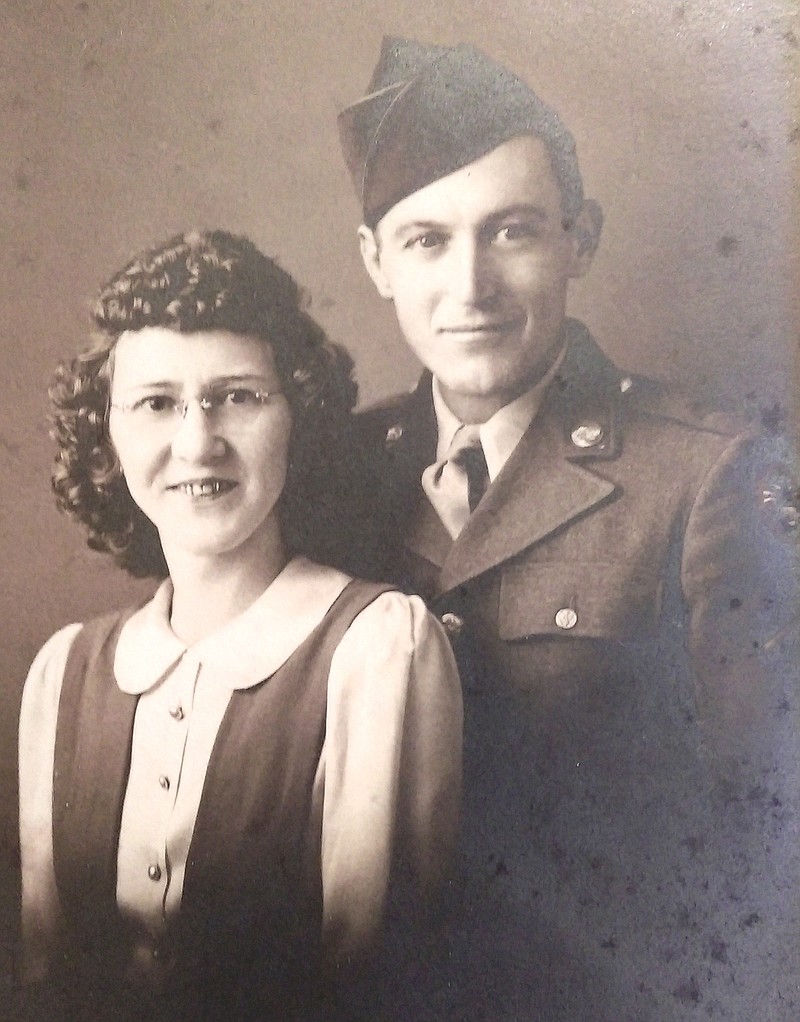More than three quarters of a century has transpired since the United States entered World War II following the Japanese attack on Pearl Harbor. In the years since this historic event, many of the men and women who served in the military during the war have died and, in some circumstances, were laid to rest before their personal accounts of service to the nation could be shared.
Fortunately, some service members, such as local Army veteran Theodore Stubinger, have family members who were devoted to preserving the stories of the sacrifices made by their loved ones during the tumultuous period of World War II.
Born on a farm north of Russellville on Dec. 26, 1915, Stubinger was the son of an Austrian immigrant and attended the local school while growing up. As he entered adulthood, he began to explore a vocational interest that would transition to a career several years later, his niece, Dorothy Rockelman, said in a 2017 interview prior to her death.
"Before he was in the service," Rockelman said, "he worked as an automobile mechanic at one of the garages that used to be in Russellville - the old MFA garage that was once located downtown, I believe."
Stubinger's journey to military service began with The Selective Training and Service Act, which was implemented in 1940 and required the "registration of all males between the ages of 21 and 35," said Roger William Little in his book "Selective Service and American Society." The author went on to state that "in the first registration more than 16 million men registered"- a staggering number that included the 24-year-old Stubinger.
The budding mechanic was married to his sweetheart, Verneda Kirchner, on Oct. 26, 1941. Several weeks later, the nation entered WWII. However, it wasn't until the following year, on Dec. 30, 1942, that Stubinger was inducted into the U.S. Army at Fort Leavenworth, Kansas.
"I never heard him talk about his time in the service or anything from the war," Rockelman said, describing the modest amount of information the family has regarding her uncle's military service.
The former soldiers' military discharge papers indicate his assignment to the 671st Tank Destroyer Battalion, a unit activated at North Camp Hood (now Fort Hood), Texas, on June 12, 1943, according to an official unit history.
The battalion trained at the camp's Tank Destroyer Unit Training Center, whose primary mission was to provide specialized training in maneuverability and armored warfare. This included familiarity with such weaponry as the 75mm gun and the M10, the latter of which was an early model tank destroyer.
During the training period, Stubinger became one of the mechanics for the tank destroyers. His capabilities, and that of his fellow mechanics, was demonstrated in unit records denoting the battalion's maintenance section was "considered the best of any battalion in the TD BUTC (Tank Destroyer Basic Unit Training Center)," scoring an impressive 490 out of 500 points on the rating scale used in assessment.
Later in their training, the battalion received the newer M18 Hellcats - a minimally armored tank with top speeds of more than 55 mph and armed with a 76mm cannon.
For the next several months, the battalion conducted field exercises and maneuvers at Camp Swift, Texas, in addition to field training at Fort Knox, Kentucky. Despite the war in Europe having ended during their training, the battalion anticipated serving in the Pacific. They left Kentucky by rail and arrived in Seattle, Washington, in late December 1944 to prepare for overseas deployment.
Lt. Col. Allerton Cushman, who served as the battalion's commander, wrote in the February 1946 edition of the Field Artillery Journal that the 671st "arrived in Leyte (Philippines) in the summer of 1945 and immediately began intensive training "
In his article, Cushman goes on to explain the battalion received the newer M-36 Tank Destroyers while in the Philippines and began training as "corps artillery, infantry assault guns," learning the "technique of adjusting fire exactly the same as conventional field artillery "
While still training, the atomic bombs were dropped on Japan, thus heralding the end of the war and rendering unnecessary the need for the continued service of the battalion. Stubinger boarded a troopship in early January 1946, returning to the United States and receiving his discharge at Fort Leavenworth the following month.
After the war, Stubinger came back to Russellville and reunited with his wife. The veteran was later employed as the shop foreman for Vanosdoll Motors and American Motors in Jefferson City. In 1991, his wife died, and he later remarried. Stubinger died Jan. 28, 1994, and was laid to rest in the cemetery of St. Paul's Lutheran Church in Lohman.
With no children to carry forth his story of service to the country in World War II, Stubinger's extended family hopes they can take up the mantle of preserving and sharing his proud legacy of service to the nation he loved.
"I didn't get to know Ted until later in life," said Beth Rockelman, the veteran's great niece. "I wish I could have known him much sooner and have had the opportunity to learn more about what he did when he was younger, especially during the war."
She added, "He was such a wonderful man, and I believe that he and many others deserved a lot more recognition than what they got when he came home from the war."
Jeremy P. Amick writes on behalf of the Silver Star Families of America.

